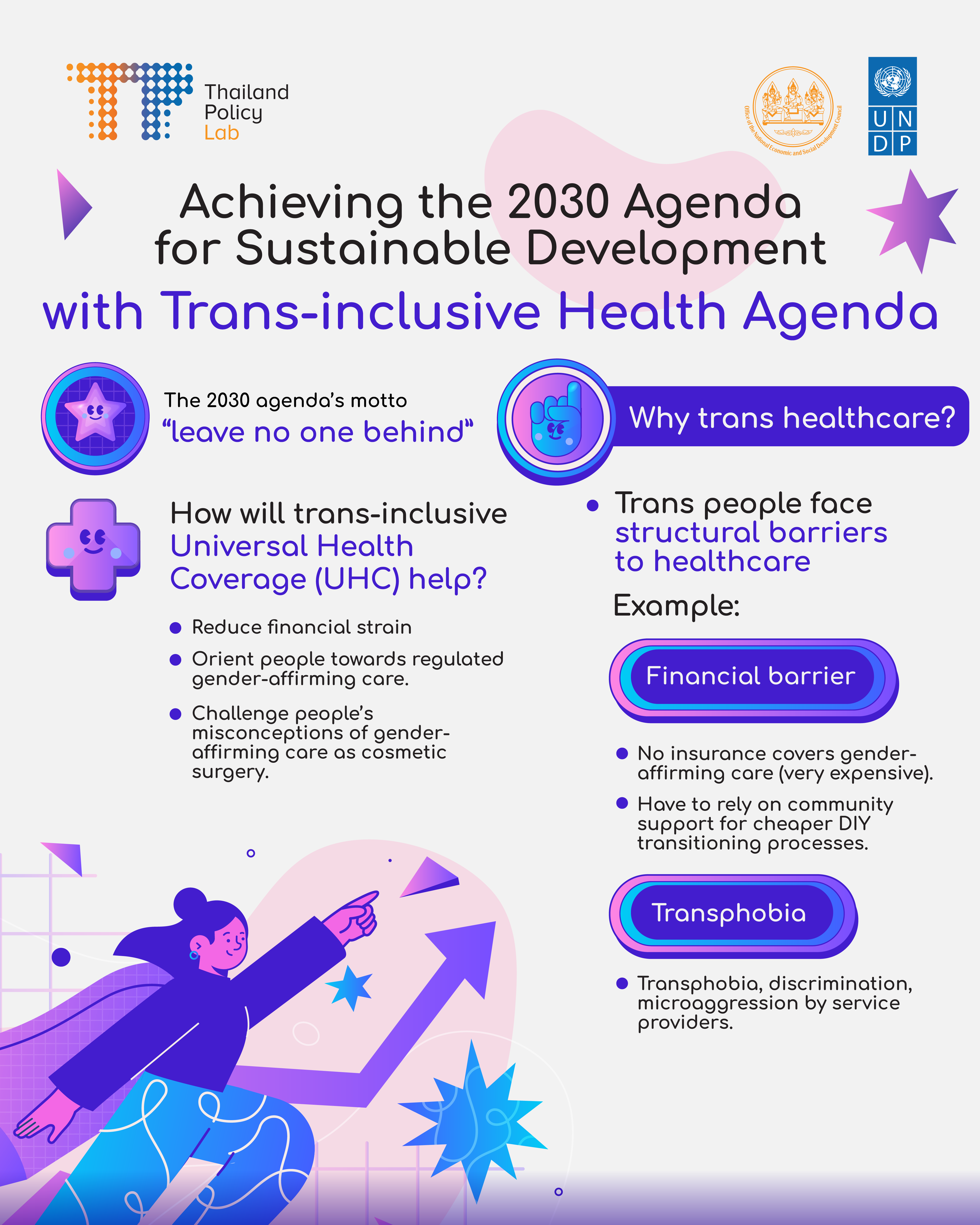“They [trans patients] just choose to go to Thailand,” said Dr Clara Tuck Meng Soo — a trans healthcare advocate from Australia — in an interview with the Guardian. Fed up of long waiting lists for gender-affirming surgery at home, many trans Australians purchase care packages offered by Thai hospitals and come here to realise their goals of transition. But can Thai trans folks conveniently do the same, when a single surgical procedure can trap one in debt, and not every province has a hospital that offers proper gender-affirming care services?
It is well-known that one of the longstanding barriers to trans healthcare in Thailand is the cost of gender-affirming care. We live in a country where, throughout history, the daily minimum wage has never exceeded 400 baht, and the household debt crisis has yet to abate. But the price of a single gender-affirming surgery, such as top surgery, can range from 10,000 up to 600,000 baht — or more. (In an interview with Coconuts Bangkok, a Thai trans man revealed that a series of gender-affirming surgeries cost him a total of 1 million baht.) Although the surgical expenditures from public hospitals might be relatively cheaper, the scarcity of hospitals with gender-affirming specialists and long waiting lists have forced many to seek expensive care alternatives of private hospitals.
But the financial burdens do not end with surgical procedures. Gender-affirming healthcare includes long-term, nonsurgical transitioning processes such as hormone replacement therapy (HRT) and voice masculinization/feminization. And such are also far from being affordable or easily accessible.
Up until now out-of-pocket payment is the only way to cover the cost, as gender-affirming care does not fall under the responsibility of formal insurance. This adds a sustained financial strain to those who wish to transition or act as guardians of trans youth. Financial cost of examinations, for example, is among the primary concerns for guardians and family members of trans youth across Thailand, Indonesia, and the Philippines. Unable to bear financial burdens on their own, many have to give up on their transitioning journey, or resort to unregulated, self-medicating processes, such as DIY hormone therapy and underground surgery. But it might not have to be this way anymore.
In early December 2023, the National Health Security Office (NHSO) announced that gender-affirming care packages would be included in the “gold card” universal health scheme. The scheme’s breadth of coverage would also be subjected to further review. Transitioning processes previously excluded from the scheme — such as breast augmentation/reduction and genital construction surgery — are expected to enter into this trans healthcare package.
By making healthcare affordable, trans-inclusive Universal Health Coverage (UHC) potentially relieves trans people of a lifetime of socio-economic burden. A 2022 study from Youth LEAD shows that universal health coverage is at the forefront of health priorities for trans youth as well as guardians and family members of trans youth. The call for more expansive trans healthcare also includes diversification of gender-affirming care, such as trans-inclusive mental healthcare and primary care.
In addition, the scheme will bring people closer to medical help that is originally intended to be in service to them. Inaccessibility to trans healthcare is so pervasive that some have never visited gender-affirming providers and rely solely on community support — partly out of fear of healthcare discrimination and partly due to lack of resources and connection to trans healthcare services. Although transition without medical counselling might be a more affordation option, it comes with serious health risks with long-lasting impact.
This policy is a tangible manifestation of the government’s social contracts to protect people’s rights to life, so that the burdens of caretaking will fall less and less on the shoulders of the trans community, who is already in a battle with the everyday violence of transphobia and other interlocked oppressions.
It is also the testimony to public policy’s essence. It does not “save” people, ceding itself to the logic of saviour’s benevolence. It does not pin people to perpetual victimhood, in which one is required to audition for ‘help’ by proving their deservedness and the weightiness of their suffering. What public policy does is open the door for people to fully embody their own humanity. A quiet but unwavering declamation that trans lives and human dignity matter, and that the future is where no one is left behind.
Sources:
Asia Pacific Transgender Network
Bangkok Post
Bio Med Central
Coconuts
Matichon
Springer Link
Thai PBS World
The Coverage
The Guardian
UNDP

